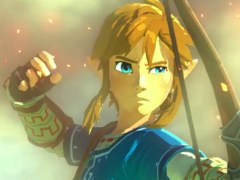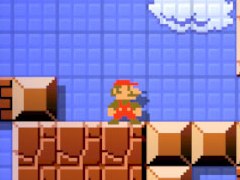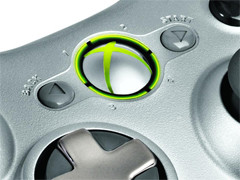You can trust VideoGamer. Our team of gaming experts spend hours testing and reviewing the latest games, to ensure you're reading the most comprehensive guide possible. Rest assured, all imagery and advice is unique and original. Check out how we test and review games here
Earlier this week Nintendo CEO Satoru Iwata finally admitted what we’ve all known for some time now: that the 3DS launch was handled with all the care and foresight of a drunk nudist man-scaping his nether regions with a Black and Decker hedge-trimmer.
“We also must reflect on the fact that we were not able to launch Nintendo 3DS at a time when a sufficient number of strong software titles were ready,” said Iwata, speaking at a shareholder meeting. “In order to avoid the same thing from happening to the Wii U, we are considering details, such as what software is suitable for the launch, more carefully than ever before.”
Iwata is right to be concerned. When the 3DS was first revealed at E3 last year the response from the press and public was largely enthusiastic; now, some three and a half months after release, it feels as if that goodwill has largely dissipated. You may be feeling disappointed, justified in your initial scepticism, or even just annoyed at the prevailing negative attitudes to the machine. Whatever your outlook, the chances are you’ll agree on one thing: the 3DS could be doing a lot better at this point in its life.
It’s not all been doom and gloom over the past quarter-year, and for many gamers the much-anticipated Ocarina of Time remake has been one of the highlights of the year. But after a relatively impressive debut at number 2 in the all-formats chart, even this masterpiece slipped down the table with relative speed. By contrast, Resident Evil: The Mercenaries 3D limped into the chart at 21 on its opening week, and then plummeted out of the top 40 altogether. And despite this poor showing, Mercenaries was still the second best-selling 3DS game in the week ending July 9.
In the long-distance race of software sales, most 3DS games are struggling to compete. In fact, some of them aren’t competing at all; they’ve locked themselves in the changing room so they can chomp away on a box of KrispyKremes. And while you can partly blame the chart non-appearance of 3DS titles on the comparatively small user base (not a good sign in itself), the truth is inexorably clear: people don’t want to play these games.
In most cases, it’s not hard to see why, either. The majority of 3DS releases so far have been painfully thin on content, allowing you to blitz through them in the course of an afternoon. PilotWings Resort can be completed, on a basic level at least, in about three hours, while the appallingly thin Steel Diver offers just seven (brief) levels in its main mode. Both titles encourage you to replay them for higher scores and rankings, but so do most iOS games – and they charge you 59p, rather than £40.
/https://oimg.videogamer.com/images/3eb4/3ds_blue.jpg)
Beyond all this, it’s also fairly obvious that 3D has failed to ensnare the imagination of developers. By the time the original DS arrived in Europe it had games like Project Rub and WarioWare: Touched! to showcase the machine’s central features. By contrast, we still don’t have a single 3DS title that really demonstrates how portable, naked-eye 3D can offer new kinds of gameplay – possibly because it can’t. A recent Japanese survey found that aside from the high price tag, the main reason gamers aren’t buying the 3DS is because they’re still happy with their DS or DSi. In a nutshell, people think it doesn’t offer anything new.
With the Wii U, it’s absolutely essential that Nintendo don’t make the same mistakes – because there’s a distinct possibility that this could happen again. With their choice of name, Nintendo has drawn a strong link between the Wii U and its predecessor, but I’m not entirely convinced this was a wise move. The Wii brand certainly doesn’t carry much weight with serious gamers, and I suspect that more casual users will think, “I already have a Wii.”
Unless they actually see the new controller, of course. In which case they’ll think, “I already have an iPad.”
Thanks to the bewildering E3 reveal, most people aren’t even sure what the Wii U is yet. Between here and release day, Nintendo needs to sell us the idea of what its new machine is, and what it can do. We need to know that the Wii U is worthy of both our time and our money, and as Iwata says, a strong set of launch titles will help in that regard. The fact that the new machine can run the Unreal 3 engine has made it easy for the likes of Gearbox to bring their current projects to the platform, and the confirmation of big franchises like Assassin’s Creed, Ghost Recon and Ninja Gaiden is undoubtedly an encouraging sign. But let’s not forget that the 3DS also promised strong third party support from the off.
The bottom line is that Nintendo has a window of opportunity to make its mark with the Wii U. The console is to due to be released some time after March next year, and assuming Nintendo is first to market, the Wii U will, for a time, be the most powerful console that money can buy. But Microsoft and Sony are sure to show their hands soon, and if Nintendo doesn’t offer consumers a proper incentive to adopt early, many will wait for the more powerful options. The 3DS launch has been a rare fumble by the big N, and it can’t afford to make the same mistakes a second time.






